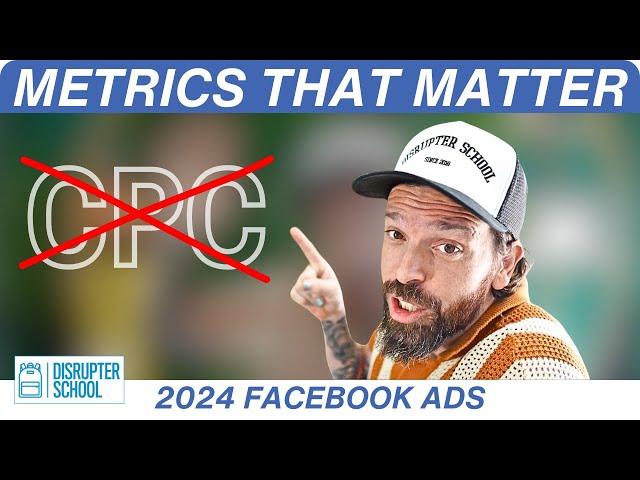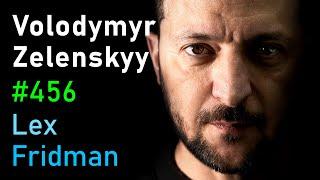
Stop Focusing on Clicks and Start Measuring Action: Why CPC and CTR doesn't matter in Facebook Ads
Unveil the secrets of digital advertising metrics in this mind-blowing video. Find out why clicks are overrated and why Estimated Action Rate is the real game-changer. Get ready to challenge your perspective on CPC and CTR as you learn how these metrics can be misleading. Don't miss out on this valuable knowledge - hit that subscribe button and stay ahead of the competition!
CharleyBot.ai is Free 24hrs a day
► Education Resources
- The Facebook Ads MBA Program: https://bit.ly/JoinTheMBAStandard
- Disrupter School (Trial for $100): https://bit.ly/DisrupterSchoolEnroll
- Facebook Disrupter Group (free): https://bit.ly/DisrupterFacebookGroup
► Newsletter & Merchandise
- Shape of Disrupt: https://bit.ly/DisrupterNewsletterSignUp
- Disrupter School Merch Store: bit.ly/DisrupterMerch
► Connect With Me On Other Platforms
- Twitter: https://twitter.com/CTtheDisrupter
- Instagram: https://instagram.com/CTtheDisrupter
- LinkedIn: https://www.linkedin.com/in/charleytichenoriv
#FacebookAds #MarketingStrategies #OnlineAdvertising #BusinessGrowth #AdCampaigns #socialmediamarketing
In the dynamic landscape of Facebook advertising, there's a growing realization that conventional metrics like Clicks, Cost Per Click (CPC), and Click-Through Rate (CTR) are not the most effective indicators of ad success. This shift in focus is driven by the understanding that these traditional metrics do not fully capture the essence of user engagement or the true value of an ad. The concept of Estimated Action Rate and a deeper analysis of the unit economics of attention are emerging as more holistic and meaningful measures. This approach is central to the Facebook Ads MBA program, which delves into the intricacies of ad performance, emphasizing the importance of scale, efficiency, and stability in ad campaigns. It challenges the traditional norms of ad creation and performance measurement, advocating for a more scientific and data-driven approach.
Inadequacy of CPC as a Primary Metric:
CPC is often misleading as it only measures the cost of a click without considering the quality or intent behind the click.
A low CPC does not necessarily equate to high ad effectiveness, especially if the clicks do not lead to meaningful actions or conversions.
The focus on CPC can lead advertisers to optimize for lower costs rather than better outcomes, potentially attracting low-intent traffic.
The Illusion of Clicks and CTR:
Clicks and CTR are surface-level metrics that don't account for the user's journey beyond the click.
High CTRs can be deceptive, as they don't guarantee conversions or quality engagement with the ad content.
These metrics can encourage a narrow focus on immediate engagement rather than long-term customer value and brand building.
Ad Fatigue and Mismanagement:
Ad fatigue is often a result of poor ad management and a lack of understanding of audience dynamics.
Constantly changing ads in pursuit of freshness can lead to a lack of consistency and message dilution.
Understanding audience preferences and behaviors is key to creating long-lasting and effective ads.
Efficiency in Ad Creation and Testing:
Efficient ad creation involves understanding what resonates with the audience and refining ad elements based on data-driven insights.
Testing should be methodical and focused on understanding the impact of each ad element on overall performance.
Efficiency is not just about reducing costs but about maximizing the impact and relevance of each ad.
Stability and Long-Term Strategy:
Stability in ad performance is crucial for sustainable growth and scalability.
Ads should be designed to perform consistently over time, rather than just achieving short-term peaks.
A stable ad strategy allows for more predictable budgeting and resource allocation.
Scientific Method in Ad Testing:
Employing a scientific method in ad testing ensures that changes and optimizations are based on empirical data.
This approach reduces guesswork and enables a more strategic and informed decision-making process.
It involves isolating variables, conducting controlled tests, and analyzing results to understand the true drivers of ad performance.
Holistic View of Ad Performance:
A comprehensive view of ad performance considers not just the initial engagement but the entire customer journey.
This approach evaluates how ads contribute to overall business goals, including customer acquisition, retention, and lifetime value.
It emphasizes the importance of aligning ad strategies with broader business objectives and market dynamics.
Conclusion:
The evolution of Facebook advertising strategies reflects a deeper understanding of what truly drives ad success. Moving away from traditional metrics like CPC, clicks, and CTR, and focusing on more comprehensive measures like Estimated Action Rate and unit economics of attention, offers a more nuanced view of ad performance.
CharleyBot.ai is Free 24hrs a day
► Education Resources
- The Facebook Ads MBA Program: https://bit.ly/JoinTheMBAStandard
- Disrupter School (Trial for $100): https://bit.ly/DisrupterSchoolEnroll
- Facebook Disrupter Group (free): https://bit.ly/DisrupterFacebookGroup
► Newsletter & Merchandise
- Shape of Disrupt: https://bit.ly/DisrupterNewsletterSignUp
- Disrupter School Merch Store: bit.ly/DisrupterMerch
► Connect With Me On Other Platforms
- Twitter: https://twitter.com/CTtheDisrupter
- Instagram: https://instagram.com/CTtheDisrupter
- LinkedIn: https://www.linkedin.com/in/charleytichenoriv
#FacebookAds #MarketingStrategies #OnlineAdvertising #BusinessGrowth #AdCampaigns #socialmediamarketing
In the dynamic landscape of Facebook advertising, there's a growing realization that conventional metrics like Clicks, Cost Per Click (CPC), and Click-Through Rate (CTR) are not the most effective indicators of ad success. This shift in focus is driven by the understanding that these traditional metrics do not fully capture the essence of user engagement or the true value of an ad. The concept of Estimated Action Rate and a deeper analysis of the unit economics of attention are emerging as more holistic and meaningful measures. This approach is central to the Facebook Ads MBA program, which delves into the intricacies of ad performance, emphasizing the importance of scale, efficiency, and stability in ad campaigns. It challenges the traditional norms of ad creation and performance measurement, advocating for a more scientific and data-driven approach.
Inadequacy of CPC as a Primary Metric:
CPC is often misleading as it only measures the cost of a click without considering the quality or intent behind the click.
A low CPC does not necessarily equate to high ad effectiveness, especially if the clicks do not lead to meaningful actions or conversions.
The focus on CPC can lead advertisers to optimize for lower costs rather than better outcomes, potentially attracting low-intent traffic.
The Illusion of Clicks and CTR:
Clicks and CTR are surface-level metrics that don't account for the user's journey beyond the click.
High CTRs can be deceptive, as they don't guarantee conversions or quality engagement with the ad content.
These metrics can encourage a narrow focus on immediate engagement rather than long-term customer value and brand building.
Ad Fatigue and Mismanagement:
Ad fatigue is often a result of poor ad management and a lack of understanding of audience dynamics.
Constantly changing ads in pursuit of freshness can lead to a lack of consistency and message dilution.
Understanding audience preferences and behaviors is key to creating long-lasting and effective ads.
Efficiency in Ad Creation and Testing:
Efficient ad creation involves understanding what resonates with the audience and refining ad elements based on data-driven insights.
Testing should be methodical and focused on understanding the impact of each ad element on overall performance.
Efficiency is not just about reducing costs but about maximizing the impact and relevance of each ad.
Stability and Long-Term Strategy:
Stability in ad performance is crucial for sustainable growth and scalability.
Ads should be designed to perform consistently over time, rather than just achieving short-term peaks.
A stable ad strategy allows for more predictable budgeting and resource allocation.
Scientific Method in Ad Testing:
Employing a scientific method in ad testing ensures that changes and optimizations are based on empirical data.
This approach reduces guesswork and enables a more strategic and informed decision-making process.
It involves isolating variables, conducting controlled tests, and analyzing results to understand the true drivers of ad performance.
Holistic View of Ad Performance:
A comprehensive view of ad performance considers not just the initial engagement but the entire customer journey.
This approach evaluates how ads contribute to overall business goals, including customer acquisition, retention, and lifetime value.
It emphasizes the importance of aligning ad strategies with broader business objectives and market dynamics.
Conclusion:
The evolution of Facebook advertising strategies reflects a deeper understanding of what truly drives ad success. Moving away from traditional metrics like CPC, clicks, and CTR, and focusing on more comprehensive measures like Estimated Action Rate and unit economics of attention, offers a more nuanced view of ad performance.
Тэги:
#facebook_ad #facebook_ad_account #facebook_ads #facebook_ads_2023 #facebook_ads_guide #facebook_ads_masterclass #how_to_scale_a_facebook_ad_account_from_scratch #facebook_ad_account_from_scratch #How_to_Build_and_Scale_a_Facebook_Ad_Account_From_SCRATCH #facebook_ads_targeting #broad_targeting #broad_targeting_on_facebook #how_to_run_facebook_ads #facebook_ads_course #course #charles_tichenor #charley_t #professor_charley_t #facebook_ads_tutorial #cpc #ppc #ctr #conversion_rateКомментарии:
Moroccan Vegetables Tagine طاجين مغربي باللحم والخضر
مطبخ ابتسام Btissam kitchen
LOCA LOCA MIX || RICKO DJAWA REMIX (EDIT) 2024
SERONOCK OFFICIAL
ТВОРИМ ИЗ ХЛАМА #5 | Заканчиваем старые работы️
Мир.Труд.Craft.


























